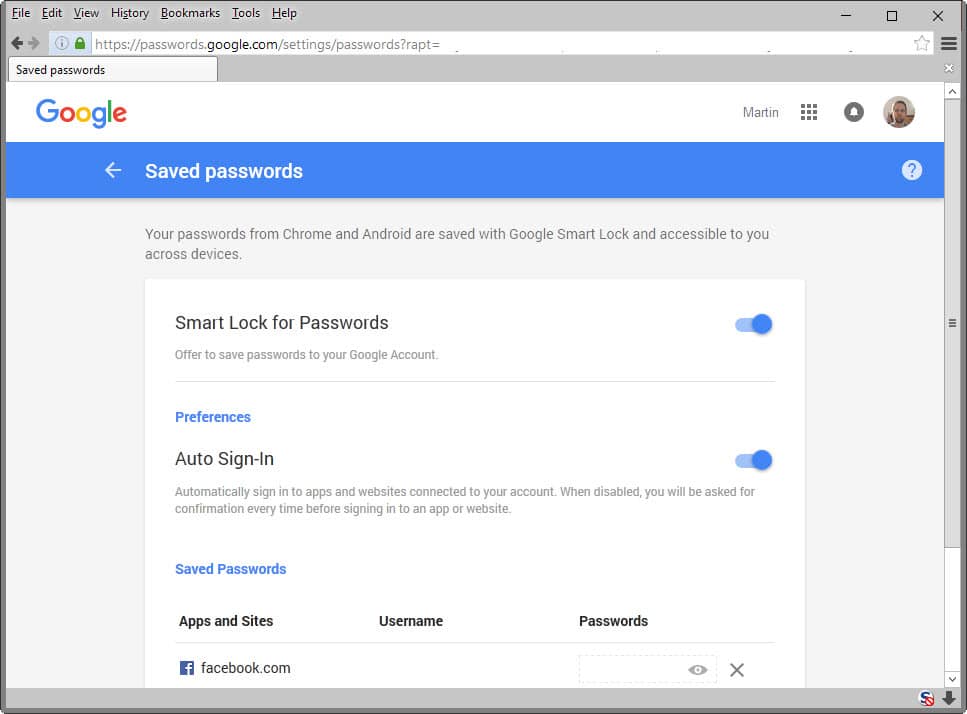

Maybe you have once disabled the auto-filling feature but forgot to enable it again.

Sometimes the incorrect “Passwords” settings of Chrome can be the culprit for your trouble. GET LASTPASS Fix 3: Check your “Passwords” settings
GOOGLE CHROME PASSWORD MANAGER GENERATOR
When you’re creating a new account for a site, Lastpass password generator instantly creates a secure, random password for you.Īll you need to remember is merely the password for your Lastpass account, and then it’ll do the rest for you. Among all the password managers on the market, we recommend Lastpass to you – a reliable and powerful product that keeps track of any passwords you have.ģ) Lastpass will automatically fill in online logins, forms, payment information. However, it’s actually not as convenient and secure to use as its counterparts of other standalone applications. You may not have heard of any other password managers before except the auto-filling tool in Google Chrome. If the fix above didn’t work for you, then perhaps you should consider using another password manager instead to take care of all your important passwords. If not, please move on to the next fix below. Now you should check to see whether the feature of auto-filling passwords have gone back to normal.

Then select Settings.Ģ) Under People, click the down arrow button to expand the drop-down list.
GOOGLE CHROME PASSWORD MANAGER HOW TO
If you are not sure how to sign out of your account, here are the steps:ġ) Click the three-stacked-dots icon at the top right corner of your Chrome browser. If it works for you, that probably suggests you’re just having a hiccup in Chrome. Simply log out of your Google account (supposing you have already logged in) and then log back in. This is a quick fix for you when there’s no other solutions in sight. Fix 1: Log in and out of your Google account You don’t have to try them all just work your own way down and list until you find the one that works like a charm. Here’re a few fixes that have helped other users solve their problems. Fix 6: Reset the browser to default settings.Fix 1: Log in and out of your Google account.Yet, if you decide to switch to PassCamp (for free), we’ll be more than delighted.

We simply know it’s easier for you to decide when you have some background knowledge, rather than merely being a user, fully immersed into Google’s products, without having been educated or asked for your opinion first. In the end, there isn’t one right or wrong answer on how you should behave – to use a Google Chrome password manager, or not. Afterwards, you will have an extra step to check if all the details are correct to make sure you don’t import anything you don’t need.Īlternatively, if you prefer video material, check out this super-quick “How to” video.Īnd that’s it! Now you’re ready to explore the greatest benefits a secure password manager brings.Select the file from Google Chrome password manager.In the top left corner select the down arrow and select Import/Export Items.Go to Chrome password manager -> Settings -> Export your data. Turn off the settings for saving passwords and autofilling.Visit Autofill section and click on Passwords.First, turn off password saving in Google Chrome:.generate strong passwords with a few clicks.Īll for your highly protected accounts and ultimate convenience.reach your data anywhere you go, on any device,.In fact, it even provides you extra convenience (compared with browser password managers), so that you can: Talking about such, PassCamp was created by using only the most advanced cyber security technologies and practises. However, this demonstration raises serious doubts whether Chrome password manager is as safely encrypted as an independent third-party password manager, primarily designed for security. This guy shows how to reveal them (Note: for educational purposes). It’s not that hard to reveal all stored passwords from the browser’s password manager, if you have a little bit of knowledge (well, most hackers have). And we won’t change all our logins before he sees them. If your laptop gets stolen, a thief not only has access to your files stored in the laptop but also to your online accounts as well.


 0 kommentar(er)
0 kommentar(er)
